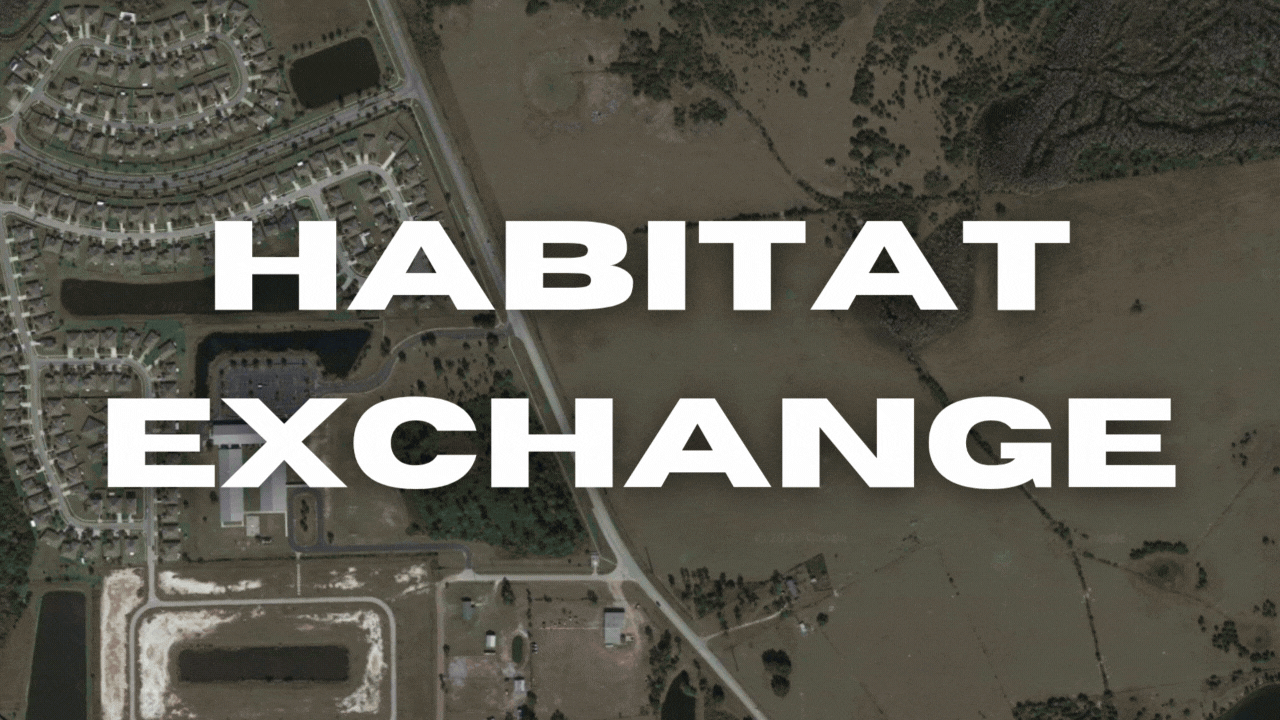Slow and shiny, a softshell turtle shuffled through a swath of yellow sand in Polk County on a tranquil April morning.
This path would’ve been treacherous for the shy creature 40 years ago. Dump trucks and bulldozers rumbled between excavation pits. The Florida sun baked withering plants into flat stretches of barren land. A pile of white sand, too bright to look at directly, towered over the property’s edge.
Years after the digging stopped, land managers turned the abandoned sand mine site into a mitigation bank: a large-scale wetland restoration project that sells credits to developers.
Crews worked for more than eight years to restore water levels, plant native vegetation and bring back the birds, turtles and panthers that the mine ousted.
It’s generally more expensive to conserve wild lands than to restore impacted ones. But Florida’s mitigation banks earn anywhere from single digits to thousands of credits for their restoration work, each of which sell for an average of $160,000.
Creating a mitigation bank is a long, slow, arduous process. Some say the restored land’s ecological and economic value makes it worthwhile.
Securing the land
Don Frasier, 80, owns the Polk County restoration site. He was raised in Auburndale and spent his early days hunting for dinner as his parents, both migrant workers, picked and packaged citrus nearby.
“I’ve always had a passion for these woods and swamps,” he said. “I want it to be preserved because I think it’s something that Florida needs.”
He bought the sand mine’s abandoned land, strewn with “piles of dirt and trash”, throughout 2014 and 2015. “There were huge mounds of nothing but tailings sand,” he said. “I bought it with the intent of doing the reclamation and making it look beautiful.”
The U.S. Army Corps of Engineers approved Frasier’s plans to turn the land into a mitigation bank in 2017.
He sold the land’s development rights to state agencies in 2018. That step, known as a conservation easement, is a requirement of the mitigation banking process.
Though conservation easements can be undone in exceptional circumstances, they’re agencies’ main way of ensuring the land will be preserved in perpetuity, not just until credits are sold.
Once the administrative work was done, crews got their hands dirty.

Building the bank
While Frasier himself still frequents the bank’s scrub islands and green swamps, Brittany Evans and Dylan Jones of Magnolia Environmental lead the restoration.
Step one was setting up monitoring stations. “We spend three or four days just walking eight miles a day through this habitat, dodging snakes,” Jones said. The pair set up stations in each different type of habitat on the property and used them to assess how well restoration progresses.
They worked to restore the site’s natural water levels, making wetlands wet again.
Next came what Jones called “high stakes gardening.”
Land managers use a combination of mechanical removal, prescribed fire and herbicide to get rid of invasive plants, then replace them with native species.
When the pair initially visited the Polk County site, native plants accounted for less than 10% of groundcover. Their goal was to get it to 50%.
Some native plants came back naturally, their dormant seeds protected from the sand mine’s disturbance by layers of soil. Evans and Jones purchased others from native plant nurseries, planning up to two years in advance to avoid delays.
“ Luckily, with some of our banks we can anticipate that need and we can look out for that one to two year timeframe,” Evans said. “Once you start going on the restoration, it's easier to keep your foot on the gas pedal.” Take it off, she said, and invasives will rush in.
The invasive species can come via water, animals and people. “There's a couple sites that we have where it might be a mile wide Cypress Floodplain with trees [so wide] that you couldn't hug,” Jones said, describing the age and size of these ecosystems. “There's nothing upstream in the unmanaged lands that's going to stop the seeds from flowing downstream to us.”
On that day in April, crews cleaned up invasive stragglers with a selective herbicide, pumping blue-tinted liquid from backpack sprayers. They huddled around a tray of sandwiches at lunchtime, satisfied with the site’s progress.
After years of work, native plant cover topped 65% at the site and invasives sat below 2%, surpassing the team’s goals.

Selling the credits
Frasier sees Florida’s developers and environmentalists as two teams in a football game. “Mitigation banks in themselves just balance the playing field,” he said.
“These people can do some developing, but they have to give up something to do it,” Frasier said. “And these people over here get something in return because they get to preserve something.”
Frasier is well acquainted with both sides.
He outbid developers looking to build on the Polk County site, securing the land for conservation, but sold nearby acreage to a sand mining company in 2010. He intends to restore that site, too, once mining is done.
He owns about 2,000 or 3,000 more lots throughout Florida, Frasier said, in which he “never intended to do anything except just conserve.”
“I might have been a rich man,” he said. “Now I just own a lot of swamp.”



